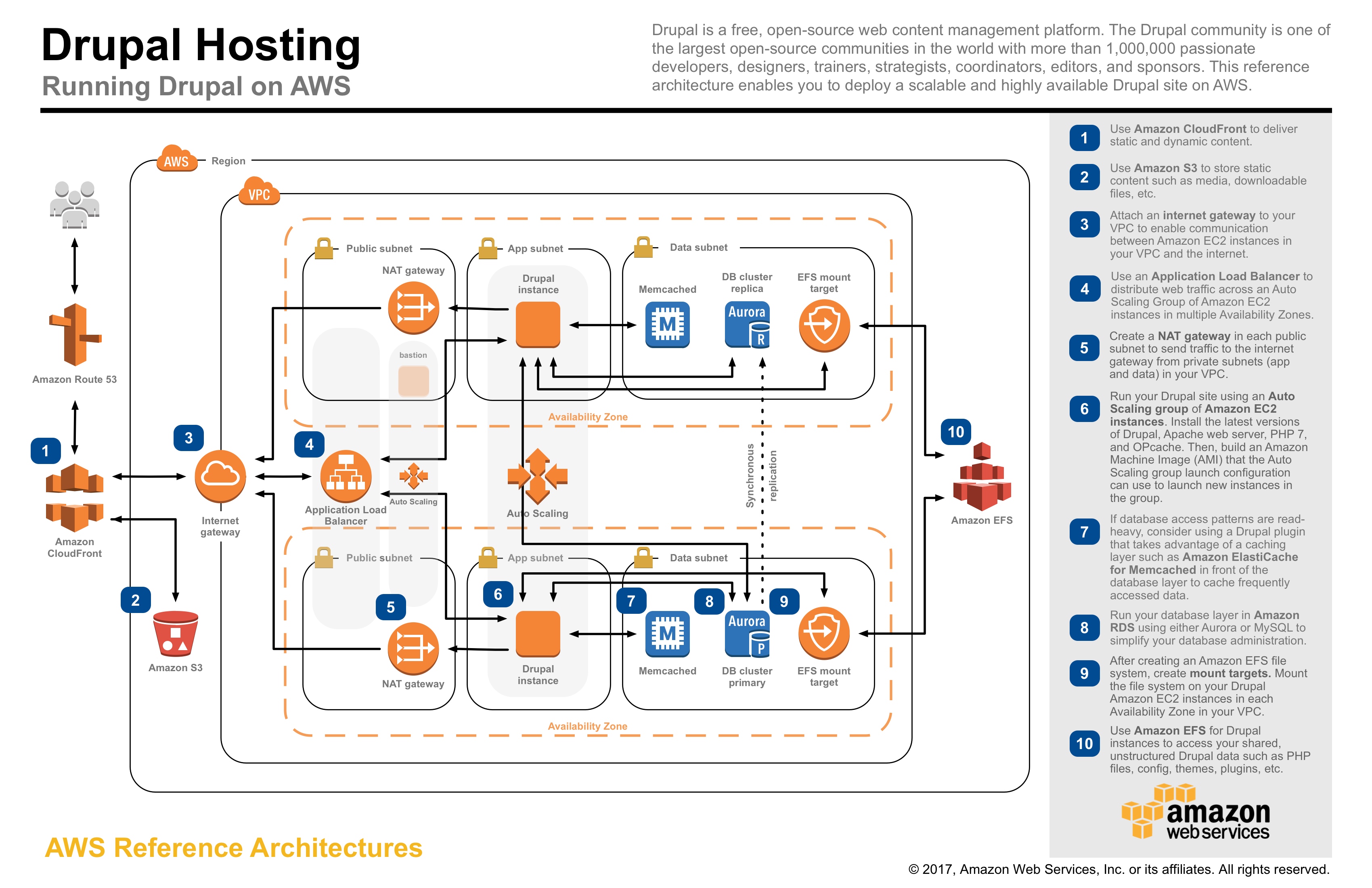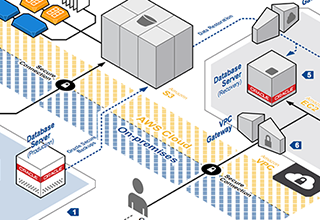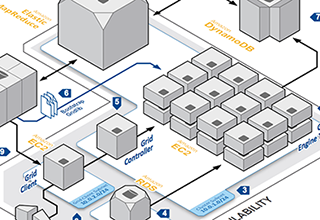Microservices are an architectural and organizational approach to software development designed to speed up deployment cycles, foster innovation and ownership, and improve maintainability and scalability of software applications.
This approach includes scaling organizations that deliver software and services. Using a microservices approach, software is composed of small independent services that communicate over well-defined APIs. These services are owned by small self-contained teams.
You can learn more the AWS approach to Microservices by reading this whitepaper: Microservices on AWS.
Below, we present additional resources to help you learn more about Microservices.
Run Containerized Microservices with Amazon EC2 Container Service and Application Load Balancers
Deploying Java Microservices On Amazon EC2 Container Service
Managing Secrets for Amazon ECS Applications Using Parameter Store and IAM Roles for Tasks
Automatic Scaling with Amazon ECS
Orchestrating GPU-Accelerated Workloads on Amazon ECS
Using Amazon API Gateway with microservices deployed on Amazon ECS
Using Amazon EFS to Persist Data from Amazon ECS Containers
Service Discovery: An Amazon ECS Reference Architecture
Service Discovery for Amazon ECS Using DNS
Service Discovery via Consul with Amazon ECS
Authenticating Amazon ECR Repositories for Docker CLI with Credential Helper
Better Together: Amazon ECS and AWS Lambda
This reference architecture shows you how to build a serverless chatbot on AWS that monitors your chat channels and removes images containing suggestive or explicit content. (GitHub)
This reference architecture simplifies the complexity of deploying a scalable and highly available Magento CE commerce platform on AWS. (GitHub)
This reference architecture enables you to deploy a scalable and highly available Drupal site on AWS. (GitHub)
This reference architecture simplifies the complexity of deploying a scalable and highly available WordPress site on AWS. (GitHub)
AWS Quick Start reference deployments help you rapidly deploy fully functional software on the AWS Cloud, following AWS best practices for security and availability. An AWS CloudFormation template automates the deployment, and a deployment guide describes the architecture and implementation in detail. Quick Starts are modular and customizable; you can layer additional functionality on top or modify them for your own implementations. Use Quick Starts to deploy the following solutions on AWS.
- Ansible Tower
- Bitbucket Data Center
- Chef Automate
- CloudStax FireCamp
- Confluence Data Center
- Docker Enterprise Edition
- Git Webhooks
- GitHub Enterprise
- HashiCorp Consul
- HashiCorp Nomad
- HashiCorp Vault
- Heptio Kubernetes
- JIRA Software and Service Desk
- Pivotal Cloud Foundry
- PowerShell DSC
- Puppet
- Red Hat OpenShift
- Spinnaker
- Swift web apps
- Windows CI/CD Pipeline
- See portal page
The flexibility of AWS allows you to design your application architectures the way you like. AWS Reference Architecture Datasheets provide you with the architectural guidance you need in order to build an application that takes full advantage of the AWS cloud infrastructure. Each datasheet includes a visual representation of the application architecture and basic description of how each service is used.
Web Application Hosting
Build highly-scalable and reliable web or mobile-web applications (PDF)
Content and Media Serving
Build highly reliable systems that serve massive amounts of content and media (PDF)
Batch Processing
Build auto-scalable batch processing systems like video processing pipelines (PDF)
Fault tolerance and High Availability
Build systems that quickly failover to new instances in an event of failure (PDF)
Large Scale Processing and Huge Data sets
Build high-performance computing systems that involve Big Data (PDF)
Ad Serving
Build highly-scalable online ad serving solutions (PDF)
Disaster Recovery for Local Applications
Build cost-effective Disaster Recovery solutions for on-premises applications (PDF)
File Synchronization
Build simple file synchronization service (PDF)
E-Commerce Website Part 1: Web Frontend
Build elastic Web Front-ends for an e-Commerce website (PDF)
E-Commerce Website Part 2: Checkout Pipeline
Build highly scalable checkout pipeline for an e-Commerce website (PDF)
E-Commerce Website Part 3: Marketing and Recommendations
Build highly scalable recommendation engine for an e-Commerce website (PDF)
Time Series Processing
Build elastic systems that process time series data (PDF)
This paper describes the AWS Well-Architected Framework, which enables customers to assess and improve their cloud-based architectures and better understand the business impact of their design decisions. We address general design principles as well as specific best practices and guidance in four conceptual areas that we define as the pillars of the Well-Architected Framework. Download Whitepaper (PDF).
The cloud reinforces some old concepts of building highly scalable Internet architectures and introduces some new concepts that entirely change the way applications are built and deployed. To leverage the full benefit of the Cloud, including its elasticity and scalability, it is important to understand AWS services, features, and best practices. This whitepaper provides a technical overview of all AWS services and highlights various application architecture best practices to help you design efficient, scalable cloud architectures. Download Whitepaper (PDF).
AWS provides you with the necessary tools, features and geographic regions that enable you to build reliable, affordable fault-tolerant systems that operate with a minimal amount of human interaction. This whitepaper discusses all the fault-tolerant features that you can use to build highly reliable and highly available applications in the AWS Cloud. Download Whitepaper (PDF).
In the event of a disaster, you can quickly launch resources in Amazon Web Services (AWS) to ensure business continuity. The paper highlights relevant AWS features and services that you can leverage for your DR processes and shows example scenarios on how to recover from a disaster. It further provides recommendations on how you can improve your DR plan and leverage the full potential of AWS for your Disaster Recovery processes. Download Whitepaper (PDF).
Deploying an application on Amazon Web Services (AWS) is fast, easy, and cost-effective. This paper is targeted at developers and architects who are looking for operational and application architecture guidance from AWS to help assess their application’s operational readiness. It provides two checklists - Basic and Enterprise - so that you can evaluate your applications against a list of essential and recommended best practices and then deploy them with confidence. Download Whitepaper (PDF).
Hosting highly-available and scalable web applications can be a complex and expensive proposition. Traditional scalable web architectures have not only needed to implement complex solutions to ensure high levels of reliability, but have also required an accurate forecast of traffic to provide a high level of customer service. AWS provides the reliable, scalable, secure, and highly performing infrastructure required for the most demanding web applications – while enabling an elastic, scale-out and scale-down infrastructure model to match IT costs with real-time customer traffic patterns. This whitepaper will review Web application hosting solution in detail, including how each of the services can be used to create a highly available, scalable Web application. Download Whitepaper (PDF).
The AWS Cloud platform includes a variety of cloud-based data storage options. While these alternatives allow architects and developers to make design choices that best meet their application’s needs, the number of choices can sometimes cause confusion. In this whitepaper, we provide an overview of each storage option, describe ideal usage scenarios, and examine other important storage-specific characteristics (such as elasticity and cost) so that you can decide which storage option to use when. Download Whitepaper (PDF).
Security should be implemented in every layer of your cloud application architecture. In this whitepaper, you will learn about some specific tools, features and guidelines on how to secure your Cloud application in the AWS environment. We will suggest strategies how security can be built into the application from the ground up. Download Whitepaper (PDF).
To run a successful email program, you must be aware of a few topics that can affect your delivery and ultimately your impact on email recipients. You might send email for a variety of reasons, including enhancing an existing relationship with a customer, marketing new products and offers, educating a group of people sharing a common interest, or notifying customers of an event. In this whitepaper, we start by discussing the value attributed to your email by your recipients and the Internet Service Providers (ISPs) responsible for protecting their inboxes. Then we explain what the emailing process looks like, who’s involved, and what their roles are. Finally, you’ll learn how to optimize value and drive it up based on some best practices we’ve compiled. Download Whitepaper (PDF).
View recorded webinars on a variety of topics from Architectural Best Practices to Migrating Applications. To view only cloud architecture content, please select the "Architecture" playlist on our video player.

























